Understanding Network Topology
 Manav Paul
Manav Paul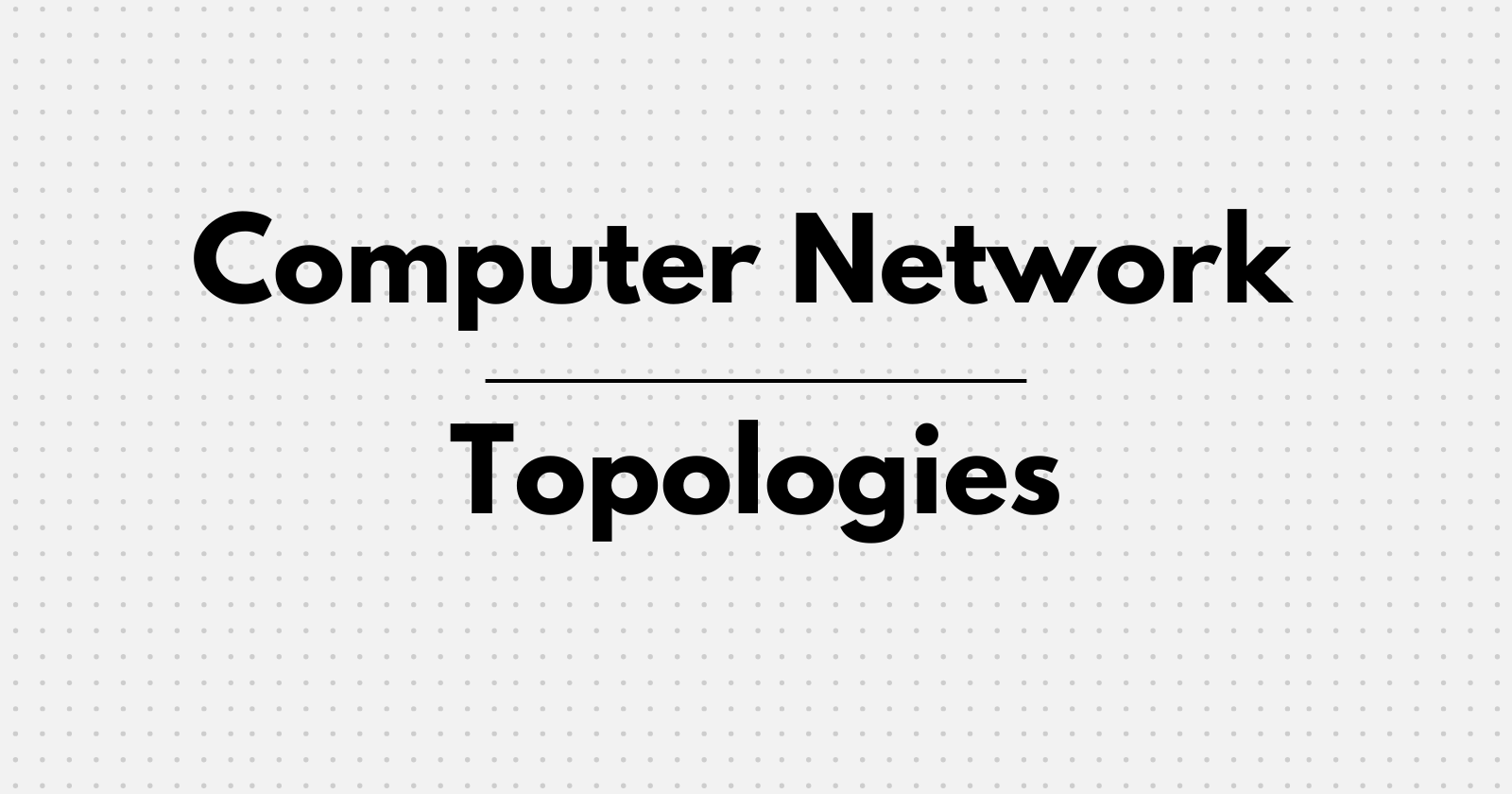
Have you ever wondered how devices are connected to form a network? The arrangement of these devices is known as network topology. Let's embark on a journey to explore the different types of network topologies and their characteristics.
Network topology refers to the arrangement of different elements like nodes, links, or devices in a computer network.
1. Point-to-Point Topology

Description: This topology connects two devices directly.
Real-life Example: A dial-up internet connection between a modem and a remote server.
Use Cases: Ideal for connecting two remote locations, such as a branch office to a headquarters.
Advantages: Provides dedicated bandwidth, high security, and easy troubleshooting.v
Disadvantages: Expensive for large networks, limited scalability.
2. Bus Topology
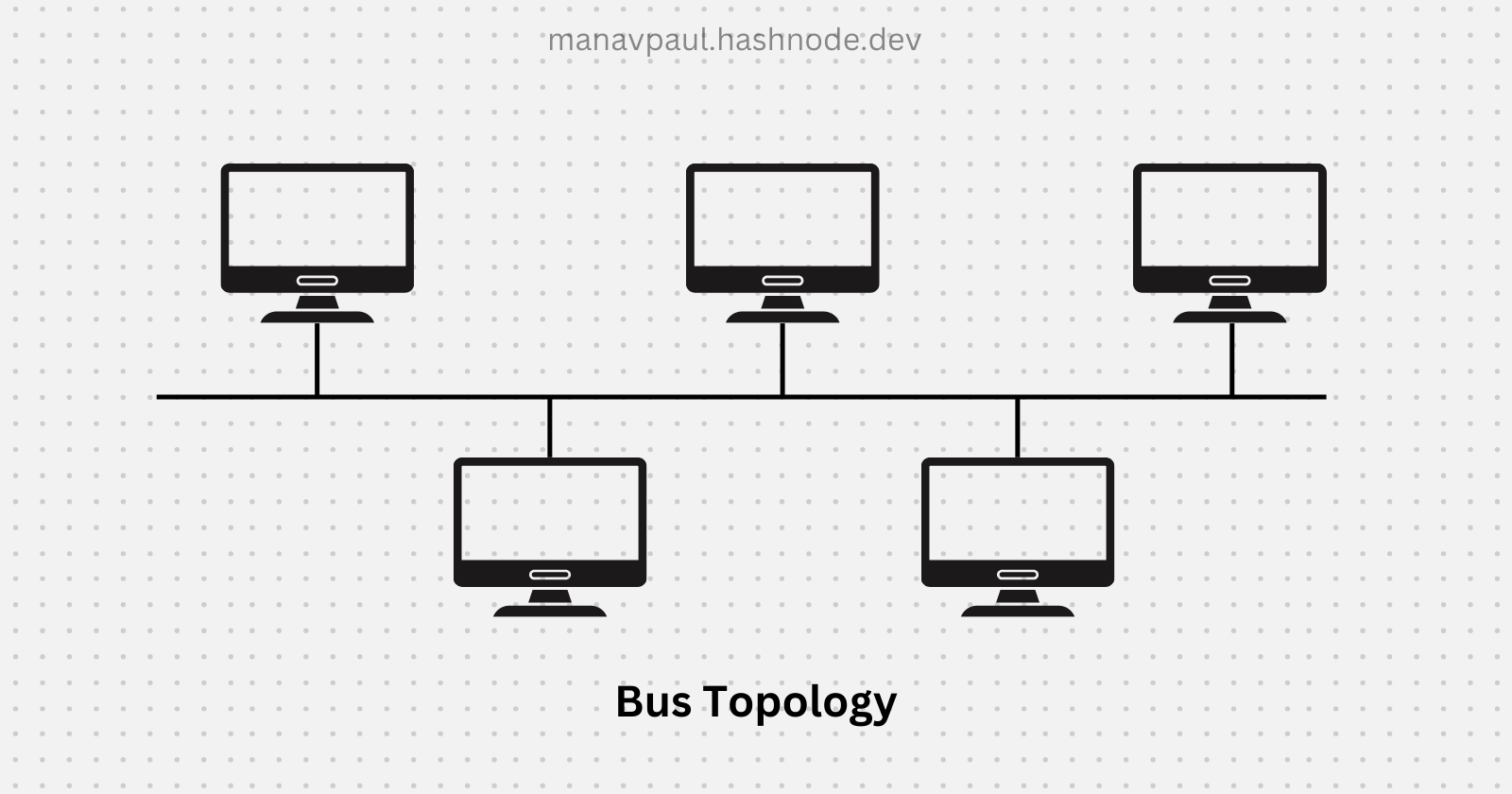
Description: Devices are connected to a single cable, or bus.
Real-life Example: Older Ethernet networks used a coaxial cable as the bus.
Use Cases: Suitable for small networks with limited devices.
Advantages: Simple to implement and inexpensive.
Disadvantages: Single point of failure (if the bus fails, the entire network is down), limited scalability, and potential for performance issues.
3. Ring Topology
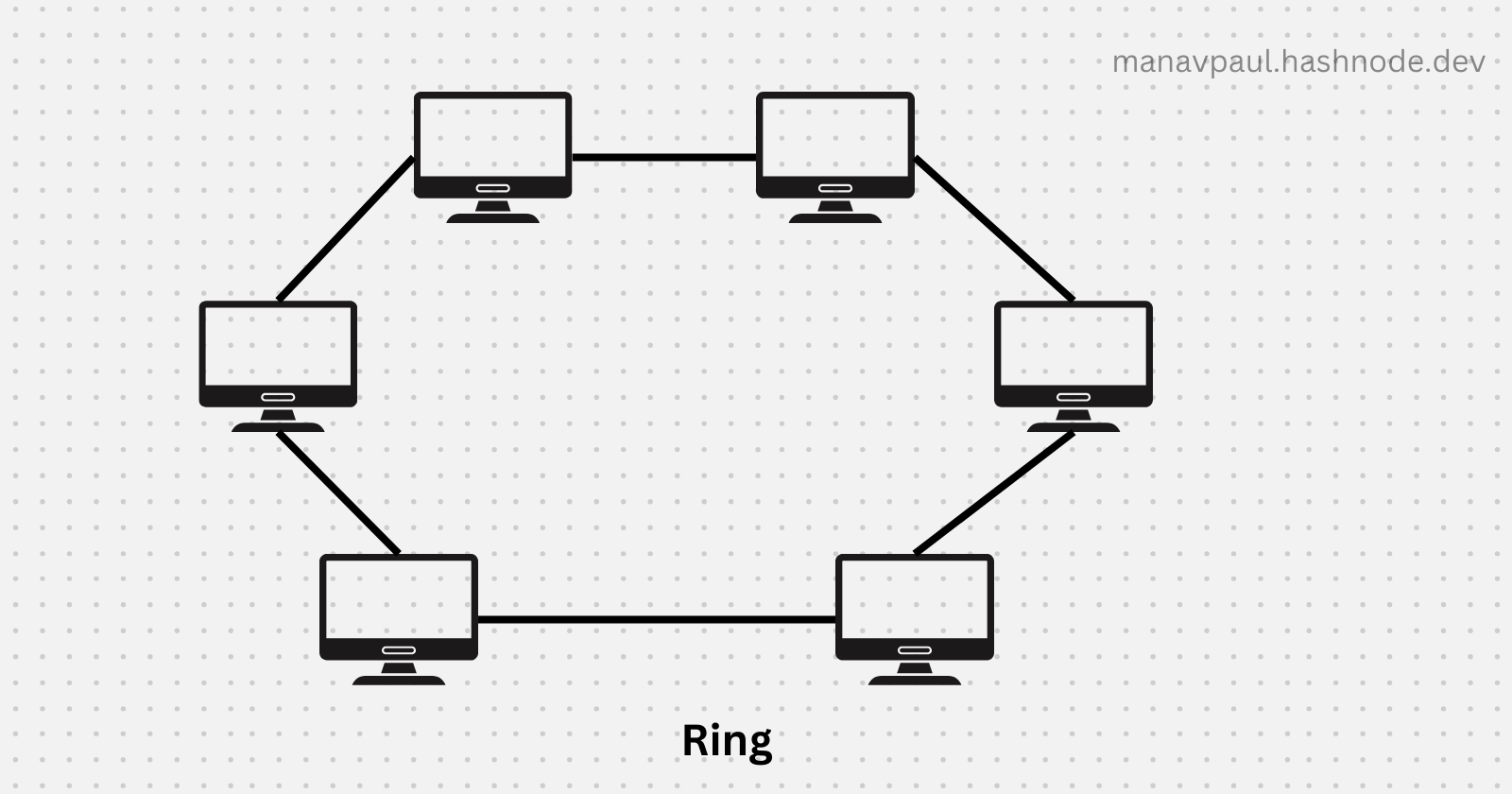
Description: Devices are connected in a circular fashion, forming a ring.
Real-life Example: Early local area networks (LANs) often used ring topologies.
Use Cases: Suitable for networks where fault tolerance is a priority.
Advantages: High fault tolerance (if one device fails, the network can continue to operate), easy to manage.
Disadvantages: Complex installation, difficult to troubleshoot, and limited scalability.
4. Star Topology
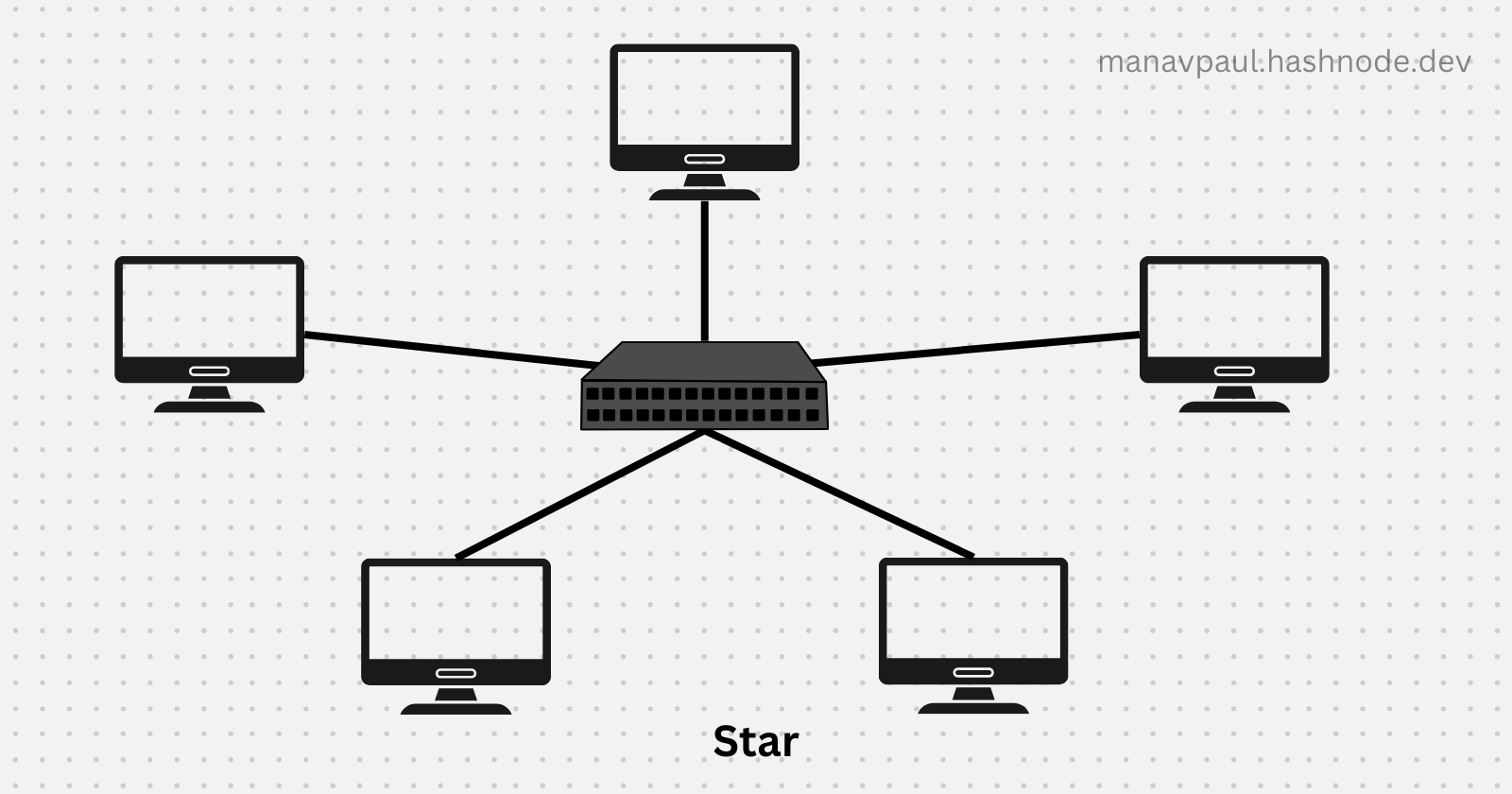
Description: Devices are connected to a central hub or switch.
Real-life Example: Modern Ethernet networks typically use a star topology.
Use Cases: Widely used due to its versatility and scalability.
Advantages: Easy to manage, high scalability, and fault isolation (if one device fails, only that device is affected).
Disadvantages: Requires a central hub or switch, which can be expensive and a single point of failure.
5. Tree Topology
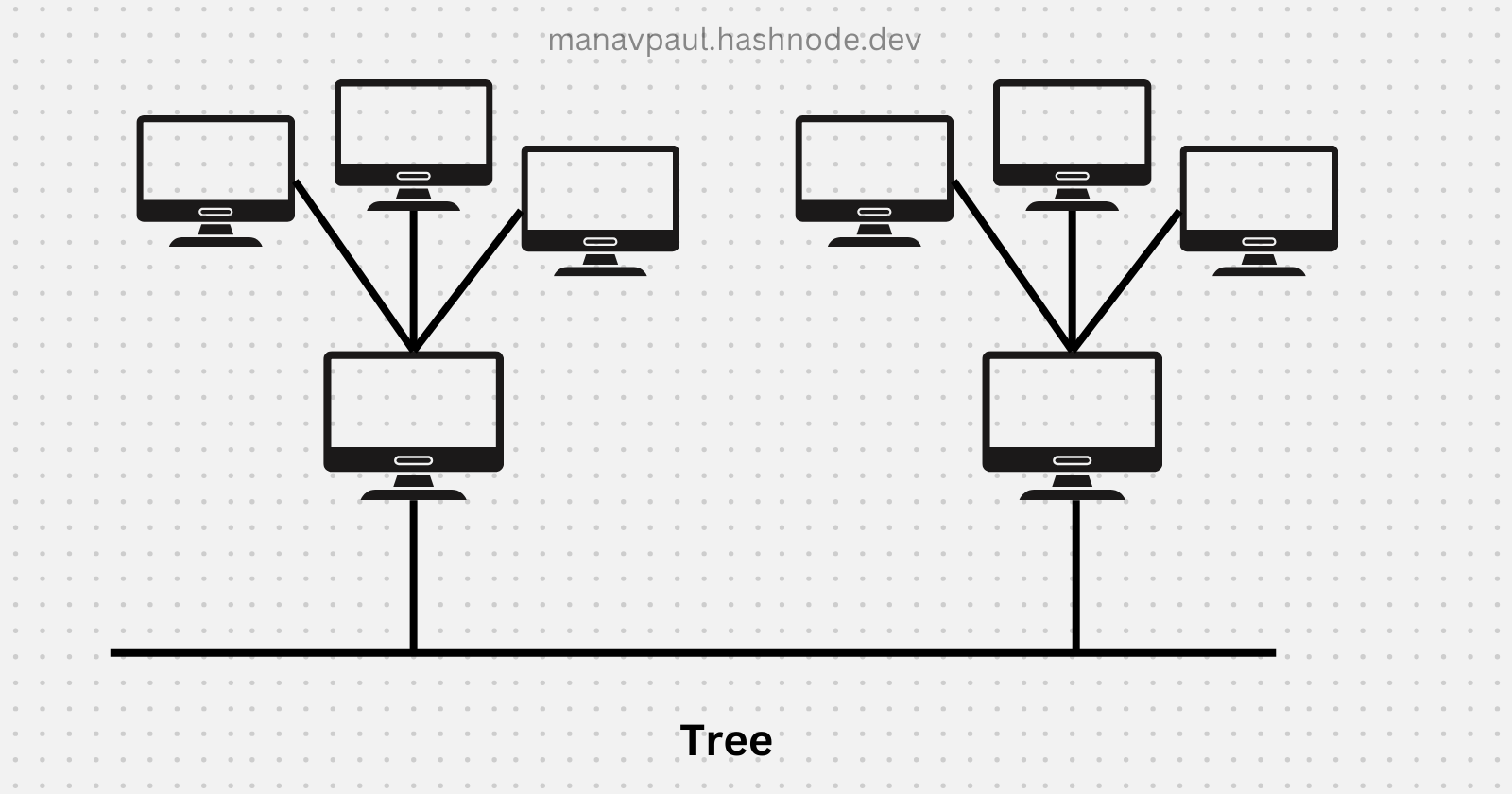
Description: A hierarchical topology where devices are connected in a tree-like structure.
Real-life Example: Large corporate networks often use a tree topology.
Use Cases: Suitable for large networks with multiple levels of hierarchy.
Advantages: Scalable, easy to manage, and provides a clear structure.
Disadvantages: Can be complex to implement, and requires careful planning.
6. Mesh Topology
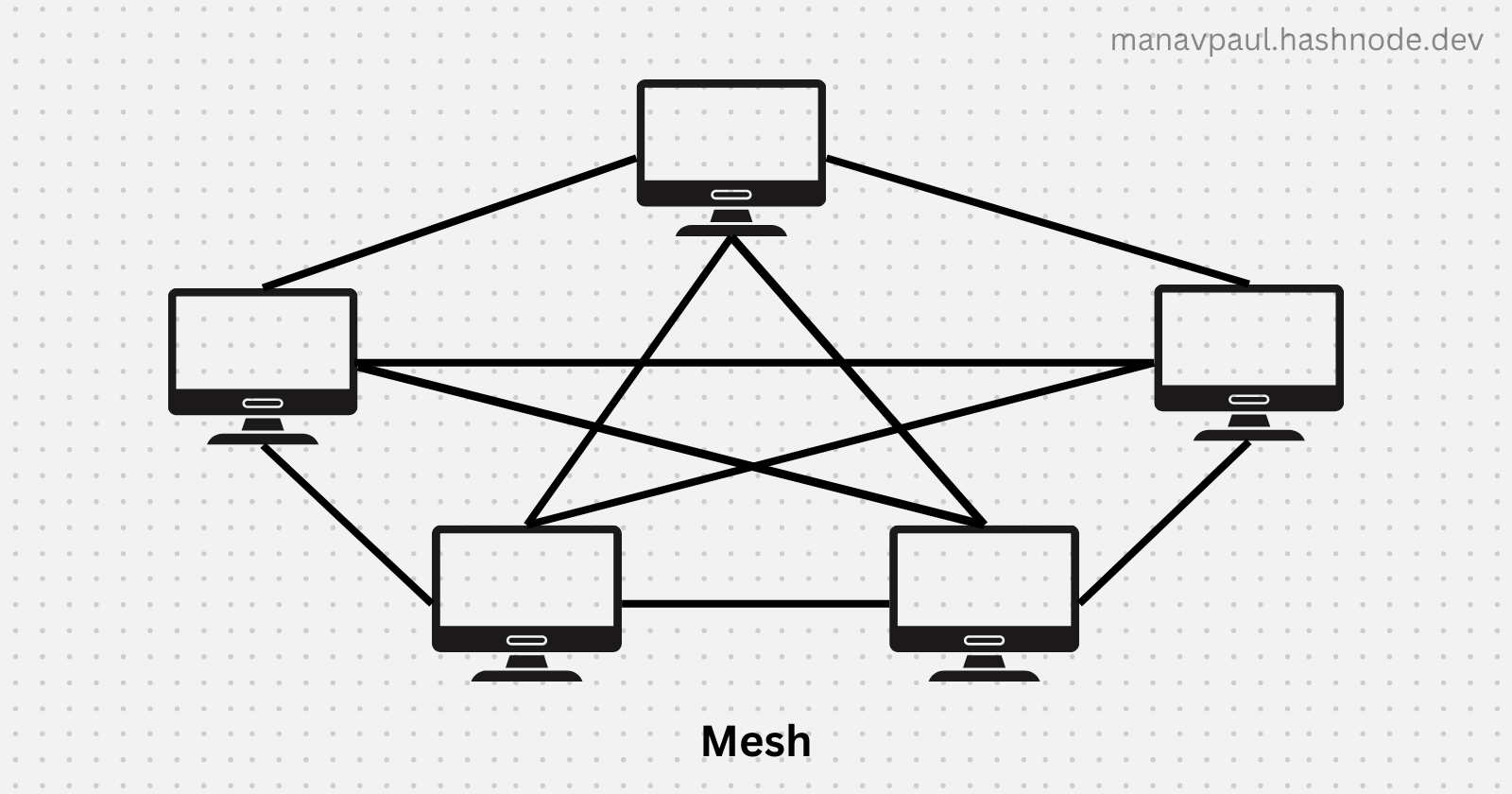
Description: Every device is connected to every other device.
Real-life Example: Wireless mesh networks are used for wide-area coverage.
Use Cases: Ideal for networks that require high reliability and redundancy.
Advantages: High fault tolerance, high bandwidth, and efficient communication.
Disadvantages: Expensive to implement, complex to manage, and requires a large number of cables.
7. Hybrid Topology
Description: A combination of two or more topologies.
Real-life Example: Many modern networks use a hybrid topology, such as a star topology with a ring topology for redundancy.
Use Cases: Provides flexibility and can address specific network requirements.
Advantages: Combines the advantages of different topologies.
Disadvantages: Can be complex to design and manage.
Choosing the Right Topology
The best topology for a network depends on various factors, including the size of the network, the required level of reliability, and the budget. By understanding the characteristics of different topologies, you can make an informed decision and design a network that meets your specific needs.
Subscribe to my newsletter
Read articles from Manav Paul directly inside your inbox. Subscribe to the newsletter, and don't miss out.
Written by

Manav Paul
Manav Paul
24, Documenting my journey of DevOps | GenAI | Blockchain | NFTs